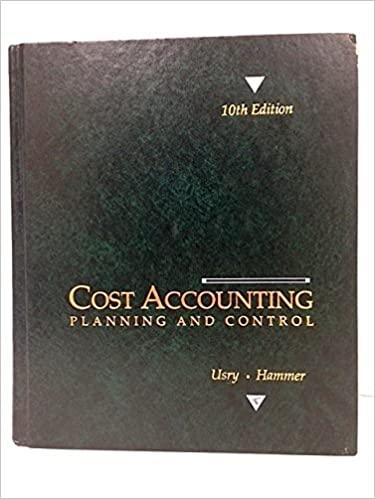ive attached the question below theres multiple parts to it

Miller Foods Corporation was formed in 2015 with the merger of Tashamo Corporation and Grouch Mayor Companies. The company reported the following rounded amounts for the year ended December 29, 2018 (all amounts in millions): Required: 1. Assumchuiller Foods uses 1/2 of 1 percent of sales to estimate its Bad Debt Expense for the year. Prepare the adjusting journal entry required for the year, assuming no Bad Debt Expense has been recorded yet. 2. Assume instead Miller Foods uses the aging of accounts recelvable method and estimates that $71 of its Accounts Recelvable will be uncollectible. Prepare the adjusting journal entry required at December 29, 2018, for recording Bad Debt Expense. 3. Assume instead Miller Foods's uses the aging of accounts recelvable method and estimates that $71 of its Accounts Receivable will be uncollectible. Prepare the adjusting journal entry required at December 29, 2018, for recording Bad Debt Expense assuming Miller Foods's unadjusted balance in Allowance for Doubtful Accounts at December 29, 2018, was a debit balance of $32. 4. If one of Miller Foods's customers declared bankruptcy, what journal entry would be used to write off its $20 balance? Complete this question by entering your answers in the tabs below. Assume Miller Foods uses 1/2 of 1 percent of sales to estimate its Bad Debt Expense for the year. Prepare the adjusting journal entry required for the year, assuming no Bad Debt Expense has been recorded yet. (If no entry is required for a transaction/event, select "No Journal Entry Required" in the first account field. Enter your answers in millions (i.e, 10,000,000 should be entered as 10), Round your answers to the nearest whole number.) Journal entry worksheet Record the entry for bad debt expenses under the percentage of credit sales method. Note: Enter debits before credits. Assume instead Miller Foods uses the aging of accounts receivable method and estimates that $71 of its Accounts Receivable will be uncollectible. Prepare the adjusting journal entry required at December 29, 2018, for recording Bad Debt Expense. (If no entry is required for a transaction/event, select "No Journal Entry Required" in the first account field. Enter your answers in millions (i.e., 10,000,000 should be entered as 10 ). Round your answers to the nearest whole number.) Journal entry worksheet Record the entry for bad debt expenses under the aging of accounts receivable method. Note: Enter debits before credits. Journal entry worksheet Record the adjusting entry for bad debts as of December 29, 2018 using the aging of accounts receivable method receivable method and assuming the unadjusted balance in Allowance for Doubtful Accounts at December 29, 2018, was a debit balance of $32. Note: Enter debits before credits. If one of Miller Foods's customers deciared bankruptcy, what journal entry would be used to write off its $20 balance? (If no entry required for a transaction/event, select "No Journal Entry Required" in the first account field. Enter your answers in millions (I.e., 10,000,000 should be entered as 10).) Journal entry worksheet Record the write-off of a certain customer account totaling $20 which is not collectible due to bankruptcy declared by the customer. Note: Enter debits before credits. Innovative Tech Incorporated (ITI) has been using the percentage of credit sales method to estimate bad debts. During November, ITI sold services on account for $150,000 and estimated that 3/4 of 1 percent of those sales would be uncollectible. Required: 1. Prepare the November adjusting entry for bad debts. 2. Starting in December, ITI switched to using the aging method. At its December 31 year-end, total Accounts Receivable is $83,300, aged as follows: (1) 1 to 30 days old, $68,000; (2) 31 to 90 days old, $12,000; and (3) more than 90 days old, $3,300. The average rate of uncollectibility for each age group is estimated to be (1) 12 percent, (2) 24 percent, and (3) 48 percent, respectively. Prepare a schedule to estimate an appropriate year-end balance for the Allowance for Doubtful Accounts. 3. Before the end-of-year adjusting entry is made, the Allowance for Doubtful Accounts has a $1,250 credit balance at December 31 . Prepare the December 31 adjusting entry. 4. Show how the various accounts related to accounts recelvable should be shown on the December 31 balance sheet. Complete this question by entering your answers in the tabs below. Prepare the November adjusting entry for bad debts. (If no entry is required for a transaction/event, select "No Journal Entry Required" in the first account field.) Prepare the November adjusting entry for bad debts. (If no entry is required for a transaction/event, select "No Journal Entry Required" in the first account field.) Journal entry worksheet Record the adjusting entry for bad debts as of November 30. Note: Enter debits before credits. Starting in December, 1 switched to using the aging method. At its December 31 year-end, total Accounts Recelvable is $83,300, aged as follows: (1) 1 to 30 days old, $68,000; (2) 31 to 90 days old, $12,000; and (3) more than 90 days old, $3,300. The average rate of uncollectibility for each age group is estimated to be (1) 12 percent, (2) 24 percent, and (3) 48 percent, respectively. Prepare a schedule to estimate an appropriate year-end balance for the Allowance for Doubtful Accounts. Before the end-of-year adjusting entry is made, the Allowance for Doubtful Accounts has a $1,250 credit balance at December 31 . Prepare the December 31 adjusting entry. (If no entry is required for a transaction/event, select "No Journal Entry Required" in the first account field.) Journal entry worksheet Record the adjusting entry for bad debts as of December 31 . Note: Enter debits before credits. Show how the various accounts related to accoumuired 4 . Revable should be shown on the December 31 balance sheet

















